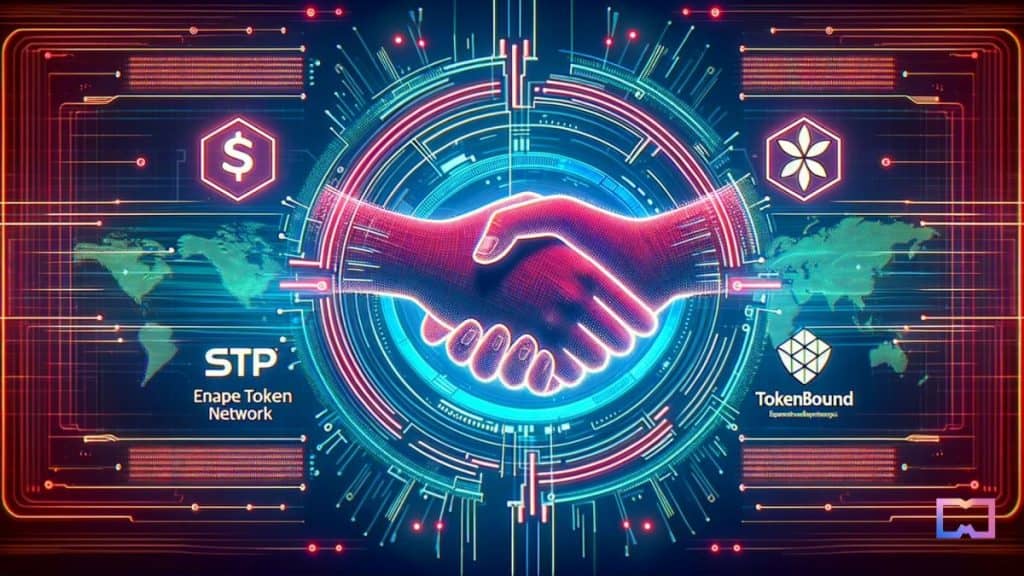STP Network Collaborates with Tokenbound V3 for Enhanced Token Capabilities


In Brief
STP Network unveiled AWNS, backed by Tokenbound V3, enhancing ERC-6551 token-bound accounts.

STP Network has unveiled its AWNS feature, now supercharged with the innovative capabilities of Tokenbound V3. Tokenbound V3, representing the latest rendition of the widely-recognized ERC-6551, promises a plethora of new functions and enhancements tailored for token-bound accounts.
This latest iteration, Tokenbound V3, doesn’t just stop at ERC-6551. It offers users the combined benefits of multi-chain accounts and sophisticated execution models. A notable feature of this integration is that ERC-6551 now assigns every NFT its exclusive Ethereum account.
Introducing Tokenbound V3 – the latest version of the most popular @erc6551 account implementation ✨
— Tokenbound Labs (ERC 6551) (@tokenboundlabs) October 31, 2023
Packed with new features and upgrades, V3 helps you harness the full power of token bound accounts in your application
Here’s what’s new (and how to start building with it) 👇 pic.twitter.com/ZVfQzEAKsy
One of the crowning features of Tokenbound V3 is its intrinsic multi-chain support. NFTs can now operate beyond a single blockchain; they can hold assets and start transactions on multiple EVM-compatible chains. Such a feature is groundbreaking, paving the way for innovative cross-chain NFT applications.
Tokenbound V3: A Hub for Multiple Operations
As it stands, Tokenbound V3 has extended its support to both Polygon and OP Stack chains, with more chains expected to join the bandwagon shortly. Special acknowledgment goes out to contributors including David Silverman, 0xPolygonLabs, and OptimismFND for their pivotal role in crafting this cross-chain Token Bound Account ecosystem.
TokenboundV3 has introduced its “delegatecall sandbox” pattern, a strategic feature that allows accounts to execute arbitrary delegatecall operations. This is done while ensuring protection against potential storage collision attacks. Additionally, the V3 model has incorporated support for both “create” and “create2” operations, further expanding its repertoire.
Disclaimer
In line with the Trust Project guidelines, please note that the information provided on this page is not intended to be and should not be interpreted as legal, tax, investment, financial, or any other form of advice. It is important to only invest what you can afford to lose and to seek independent financial advice if you have any doubts. For further information, we suggest referring to the terms and conditions as well as the help and support pages provided by the issuer or advertiser. MetaversePost is committed to accurate, unbiased reporting, but market conditions are subject to change without notice.
About The Author
Nik is an accomplished analyst and writer at Metaverse Post, specializing in delivering cutting-edge insights into the fast-paced world of technology, with a particular emphasis on AI/ML, XR, VR, on-chain analytics, and blockchain development. His articles engage and inform a diverse audience, helping them stay ahead of the technological curve. Possessing a Master's degree in Economics and Management, Nik has a solid grasp of the nuances of the business world and its intersection with emergent technologies.
More articles

Nik is an accomplished analyst and writer at Metaverse Post, specializing in delivering cutting-edge insights into the fast-paced world of technology, with a particular emphasis on AI/ML, XR, VR, on-chain analytics, and blockchain development. His articles engage and inform a diverse audience, helping them stay ahead of the technological curve. Possessing a Master's degree in Economics and Management, Nik has a solid grasp of the nuances of the business world and its intersection with emergent technologies.






















































